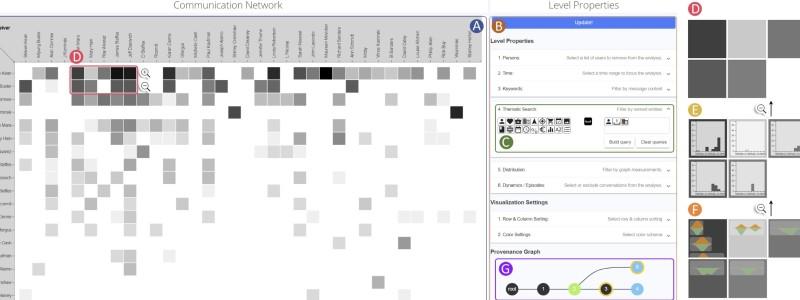
Promoting Ethical Awareness in Communication Analysis: Investigating Potentials and Limits of Visual Analytics for Intelligence Applications
M. T. Fischer, S. D. Hirsbrunner, W. Jentner, M. Miller, D. A. Keim, P. Helm
Proceedings of FAcct '22 : 2022 ACM Conference on Fairness, Accountability, and Transparency, DOI:10.1145/3531146.3533151, 2022Crime Intelligence Analysis Trust Fairness Accountability Critical Infrastructure Ethical Analysis Science And Technology Studies Communication Privacy-Preserving Data Mining Guidance Xai Digital Humanities Guidelines Stakeholders
Digital systems for analyzing human communication data have become prevalent in recent years. This may be related to the increasing abundance of data that can be harnessed but can hardly be managed manually. Intelligence analysis of communications data in investigative journalism, criminal intelligence, and law present particularly interesting cases, as they must take into account the often highly sensitive properties of the underlying operations and data. At the same time, these are areas where increasingly automated, sophisticated approaches and tailored systems can be particularly useful and relevant, especially in terms of Big Data manageability. However, by the shifting of responsibilities, this also poses dangers. In addition to privacy concerns, these dangers relate to uncertain or poor data quality, leading to discrimination and potentially misleading insights. Other problems relate to a lack of transparency and traceability, making it difficult to accurately identify problems and determine appropriate remedial strategies. Visual analytics combines machine learning methods with interactive visual interfaces to enable human sense- and decision-making. This technique can be key for designing and operating meaningful interactive communication analysis systems that consider these ethical challenges. In this interdisciplinary work, a joint endeavor of computer scientists, ethicists, and scholars in Science and Technology Studies, we investigate and evaluate opportunities and risks involved in using Visual analytics approaches for communication analysis in intelligence applications in particular. We introduce, at first, the common technological systems used in communication analysis, with a special focus on intelligence analysis in criminal investigations, further discussing the domain-specific ethical implications, tensions, and risks involved. We then make the case of how tailored Visual Analytics approaches may reduce and mitigate the described problems, both theoretically and through practical examples. Offering interactive analysis capabilities and what-if explorations while facilitating guidance, provenance generation, and bias awareness (through nudges, for example) can improve analysts’ understanding of their data, increasing trustworthiness, accountability, and generating knowledge. We show that finding Visual Analytics design solutions for ethical issues is not a mere optimization task with an ideal final solution. Design solutions for specific ethical problems (e.g., privacy) often trigger new ethical issues (e.g., accountability) in other areas. Balancing out and negotiating these trade-offs has, as we argue, to be an integral aspect of the system design process from the outset. Finally, our work identifies existing gaps and highlights research opportunities, further describing how our results can be transferred to other domains. With this contribution, we aim at informing more ethically-aware approaches to communication analysis in intelligence operations.
Related Publication







